Nomad Rescue: New Croatian App Created as One-Stop Shop for Digital Nomads
November 30, 2021 - Nomad Rescue is a new one-stop web application for digital nomads, developed by Algebra University College graduate students.
A team of graduate students from Algebra University College, "The Nomads," has developed an application that makes it easier for digital nomads to navigate the country they have chosen while answering all practical and operational questions about life in the country, reports Index.hr.
There has been a lot of talk in Croatia to attract digital nomads to live and work in the country, which has been successfully implemented in terms of regulations that allow individuals in Croatia. Thus, Croatia became one of the first countries globally with such an elaborate program for attracting digital nomads.
It is this idea that the Algebra University graduate students decided to explore and expand in more detail, where an innovative project program has recently been implemented as a compulsory course in all graduate studies.
Students acquire entrepreneurial skills during this two-year graduate study program and go through a program similar to waiting for startups in each incubator; they also have mentors available to advise them. There are no exams, no tests, but each individual's contribution is evaluated as well as the overall team result - which together represents an innovative way of practical teaching that we have not had the opportunity to see so far.
A unique part of this project is that it brings together students from various graduate studies conducted by Algebra University - software engineering, digital marketing, and data science - so students meet with different skills and different previous education, who often did not have the opportunity to get acquainted earlier in their studies, which makes exchanging ideas, knowledge, and working on the project much more exciting and fun.
"Our motto is that students through this course should learn how to reach the goal - after that, each new endeavor is a step forward for them, and they have a clear feeling that they will succeed; it's just a question of when. In other words, it's just a matter of their persistence," emphasizes Maja Brkljačić, one of the course leaders and head of business development in the longest-lived and most relevant startup incubator in the country, Algebra LAB.
One-stop-shop for digital nomads
Seven members of the "The Nomads" had fun studying the lifestyle of digital nomads, which led to the idea of developing a web application, "Nomad Rescue," a one-stop shop for digital nomads. Their research of the problems digital nomads face has shown that it is challenging to relocate to another location for some. In contrast, for others, the situations they face after relocating are much more challenging.
Andro Žonja and Ivan Jakovljević, graduate students of software engineering, Nina Tudor, Marta Krznar and Filip Puljić, graduate students of digital marketing, and Antonio Akrapović and Mateja Novaković, who are studying at the graduate study of data science, designed an application that would quickly and efficiently offer nomads reliable information on various topics.
Nomad Rescue is designed as a social network that integrates a program to search for accommodation for longer stays. Its users will be able to use this social network as a tool to meet other digital nomads in their location and thus find roommates. It will also feature an accommodation search tool for those nomads staying for a more extended period and a module that students call a "virtual guide" that will allow users to integrate into the new environment more easily.
"It is a platform that tries to facilitate the selection of a new living environment, finding accommodation, reviewing the content offered by nearby locations, and meeting other nomads through the social network," explains Ivan Jakovljević.
"I came up with the idea almost a year before we started this project," says Nina Tudor, a graduate student in digital marketing and leader of the team.
"I follow people who travel and work and live the life of a digital nomad, and that is something I would personally like to do in a few years. I wanted to do this for myself, and as the trend of living as a digital nomad is constantly growing, I knew it could be interesting to others. The idea was perhaps too ambitious for independent production, so I am thrilled that others recognized the idea and, in this way, it came to life. Of course, the idea went through a couple of phases of changes, and in the format in which it is today, everyone in the team deserves credit," explains Nina.
The digital nomad trend is constantly growing, especially since the pandemic started. Many employees do not want to go back to offices, and companies must adapt to new labor market demands. "The pandemic has accelerated the trend of working from home, which enables employees from the IT sector and related professions to travel and stay in other areas. Maybe because of the climate, lower living costs or simply because they are interested in other cultures," says Ivan Jakovljević.
Nina says that she spent many years working in tourism and talking to people from different countries, so she concluded that many tourists like to stay in Croatia and return from summer to summer. "That's why I wasn't so surprised by the interest in the digital nomad program in Croatia. Moreover, I'm happy that people like Jan de Jong recognized the importance of such a program and made an effort to make it happen," says Nina Tudor.
Although Croatia is one of the first countries to introduce a program for digital nomads, the application was designed by students to be easily applied to any country.
"Of course, data entry is a challenge in such cases, but our application relies heavily on global information repositories offered by Amazon and Google," explains Ivan Jakovljevic.
"We believe that local governments or tourist boards could use the application to promote their locality towards digital nomads. One of the best indicators of how much a certain environment is favorable to digital nomads is the availability of information in digital form," says Ivan.
Mentors who help the student team develop the project say that it is logical to recognize this topic.
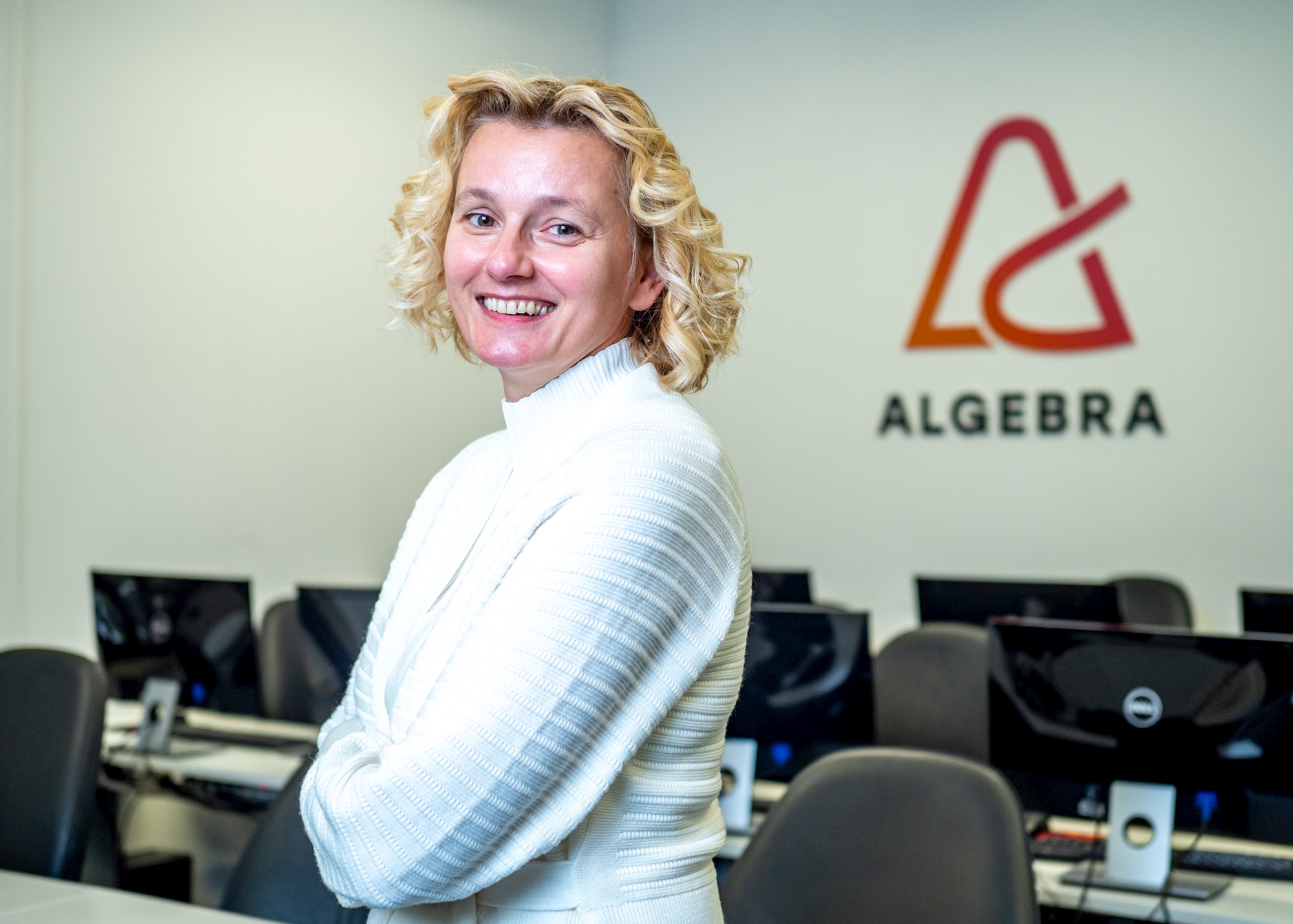
"It is expected and quite logical that the students of this generation decided on this topic because the idea of digital nomads is something that will be very prominent and present in their work experience. Moreover, Algebra students from abroad are also digital nomads, in a way. Currently, we have 2-3 startups in Croatia working on this topic, so it is very hot, and the need for such a platform is real," emphasizes Maja Brkljačić.
Such projects, once launched, can significantly contribute to the country’s success and attractiveness as a destination for digital nomads. These people travel efficiently and quickly, change their geographical location, and just as easily and quickly need to get the critical information. The project is set up in a scalable way. It can be easily replicated to other countries, which is crucial for finding sources of funding because VC funds and EU funds strongly prefer global or at least European solutions.
"From this group interdisciplinary project, I learned a lot about the marketing side of development and product design itself. I also received knowledge from colleagues in the field of data science about the use and management of information and how to implement it in our product," says Andro Žonja, a programmer who develops the back-end, i.e., the server-side of the application, which consists of a layer with business logic and a database and enables communication internally and with the client part of the application.
On the other hand, one of the future graduates of data science, Mateja Novaković, also says that "interdisciplinary cooperation is quite common today and is encouraged in all spheres of life and work." She liked working with fellow program engineering students because it allowed her to go beyond the tasks she has as a member of the data science team.
"I think this is one of the more important subjects because it prepares us for a real labor market where at some point we will need to work with people from different industries and different ways of thinking. So it is exciting for me to work on the project because of all the knowledge that I will get, not only from the mentors we work with but also from colleagues in the team," emphasizes Nina Tudor.
Antonio Akrapović says that just like any other team working on a project, without a reasonable exchange of knowledge and skills, "the project could not even start, so this synergy and exchange of opinions is crucial." Antonio was in charge of the data collection strategy and its application from data science to improve the user experience when searching for the desired service most efficiently.
But just like in the real world, not everything is always ideal - and one learns through challenges. Ivan Jakovljević especially emphasizes good communication as a prerequisite for integration and the success of each team:
"The fact that members come from different educational backgrounds enriches ideas and views on the problem, but also sometimes makes communication difficult. As a result, each newly formed team has a relatively low level of efficiency given the potential of its members. Over time, the team adopts a common language manifested in norms and a clearly defined work process. Only after that step can the team realize its potential. However, to get to that point requires quality communication and overcoming certain obstacles, which is challenging to learn from books but requires the experience of teamwork.
The mentor's task is to help the team with their knowledge and experience during the two years of project development. Of course, there are always several challenges.
"The biggest challenges arose with project modules that students have not dealt with so far, such as security aspects and the use of certificates, and data collection, which made it difficult to analyze and evaluate such tasks because students did not have reference experience with similar functionalities," says Aleksander Radovan, Algebra lecturer and expert in Java software solution development. But such situations are good because students have the opportunity to acquire knowledge that they have not yet encountered while studying or working on real projects.
Aleksander Radovan advised a team of students in the segment of software engineering and the use of current technologies in developing solutions.
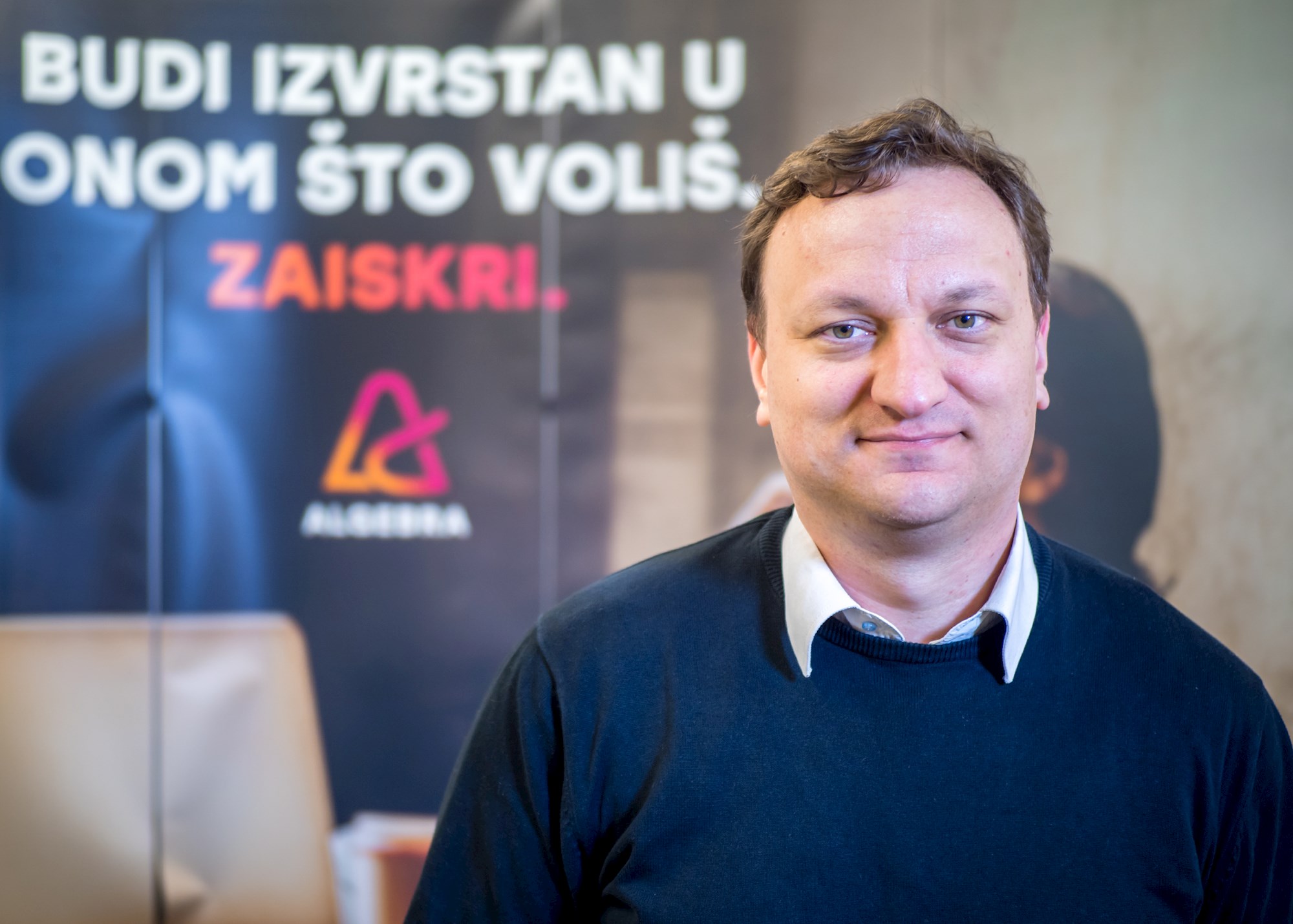
"In such situations, we helped students by adding a task related to research and development - R&D - and, after discovering how they can implement certain functionality that was a challenge for them, in the next project sprint, i.e., intensive work with a mentor, I can add the job of creating specific functionality," explains Radovan.
It is crucial, just like with any other startup, that students avoid pitfalls when developing projects.
"Most startups are designed in a way that their founders start from their own needs, believing that if the product is helpful to them, then it will probably be beneficial to others. However, such an assumption needs to be verified or validated by market research, which is a rather complicated procedure.
Our biggest challenge was to check if our ideas seem helpful to other people and try to rank them according to market interest," says Ivan Jakovljević.
Finally, how to successfully launch a new web application with such international solid competition arises. Maja Brkljačić, Business Development Manager at Algebra LAB and who has extensive experience in mentoring and organizing the incubation process for many startups, can offer advice not only to this innovative team but also to others working on similar projects in their startups.
“First and foremost, I would say: know your customer. The market for mobile applications, but also web applications, is a shark pool. In October this year alone, 69,000 new mobile appointments were announced on the Google Play Store. So for someone to want to install your application on their mobile phone or use your web service, they must be motivated," emphasizes Maja Brkljačić.
Then "you need to know how to reach that user; how they can find you among more than half a million new applications a year."
"I would say that the communication process must be as fast and simple as possible - the digital age does not suffer delays, technical problems, waiting. Which means your app needs to work perfectly. In other words - it is better to have a smaller number of functionalities when entering the market, but the degree of their refinement is as high as possible," she concludes.
Ultimately, the "Nomad Rescue" team gains valuable and vital experience and knowledge of how developing such a project in practice looks. Although this knowledge is, for the most part, actually an extension of what has already been learned during their studies, they emphasize that it is always necessary to acquire knowledge outside the formal educational process.
"It is necessary to acquire knowledge independently and outside the framework prescribed by the study curriculum. However, the knowledge we gained from different subjects proved extremely useful in certain application development steps. For example, in the field of software engineering, these are topics such as how to organize large amounts of data to be easily accessible for analysis, how to containerize an application to run on multiple computers, cryptography for sensitive data protection, and other technical topics that are crucial for the success of our project," sums up Ivan Jakovljević.
This course teaches students to neglect their domain specializations in one section and look for a common language with other colleagues.
“We ask them to participate, as much as possible, together in working on different tasks: so software developers have to start communicating with end-users, which is a very new and often surprising experience for them. At the same time, product developers develop a functional specification and face, for example, how difficult it is to make changes to functionalities once they have been developed. So tomorrow, when they will work on similar complex projects, we expect that our students will communicate much better and understand their colleagues in other departments," concludes Maja Brkljačić.
To read more about lifestyle in Croatia, follow TCN's dedicated page.
3 Digital Nomad Ambassadors, 1 Nomad Table, Tonight at BIZkoshnica in Zagreb
November 30, 2021 - Month 5 of the Zagreb Digital Nomad Ambassador project is coming to an end, with no less than 3 ambassadors taking part in tonight's Nomad Table hosted by Rax Suen.
I was not quite sure what to expect when Rax Suen from Singapore was selected as the Zagreb Digital Nomad Ambassador for November, but I knew it would take this excellent project into a new direction. And so it has proved. Rax is the first Asian ambassador, and his perspectives on the potential of both Zagreb and Croatia regarding the digital nomad community have been particularly insightful.
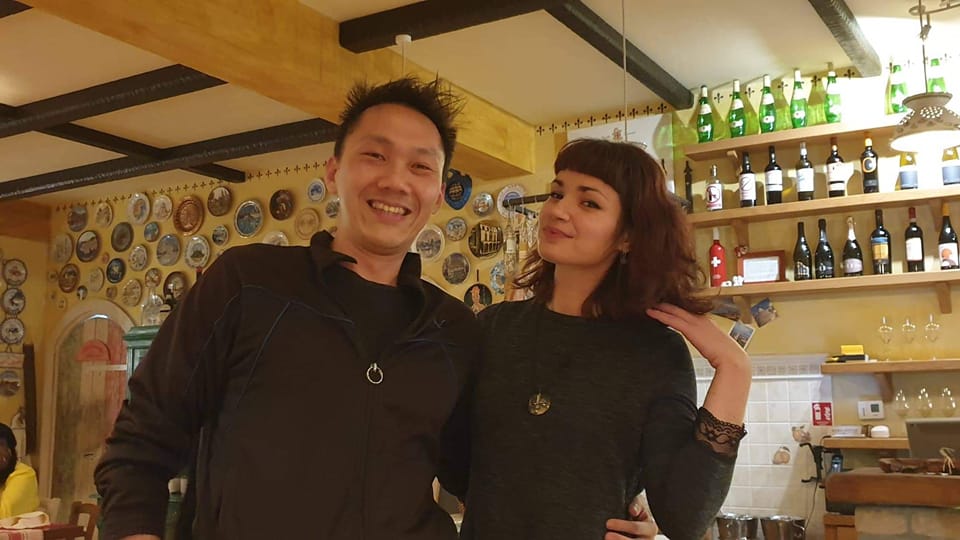
And I think this young man from Singapore has had a little fun along the way, despite the fact that November is perhaps not the most attractive month to visit. One highlight was certainly the outstanding Michelin Starry Nights in Dubrava, raising money to dig wells in Uganda, above.
Rax is holding his final event this evening at BIZkoshnica coworking space at Ilica 71 at 18:00 (all welcome), when he will be handing over ambassadorial duties to our final ambassador, Anna Maria Kochanska from Poland.
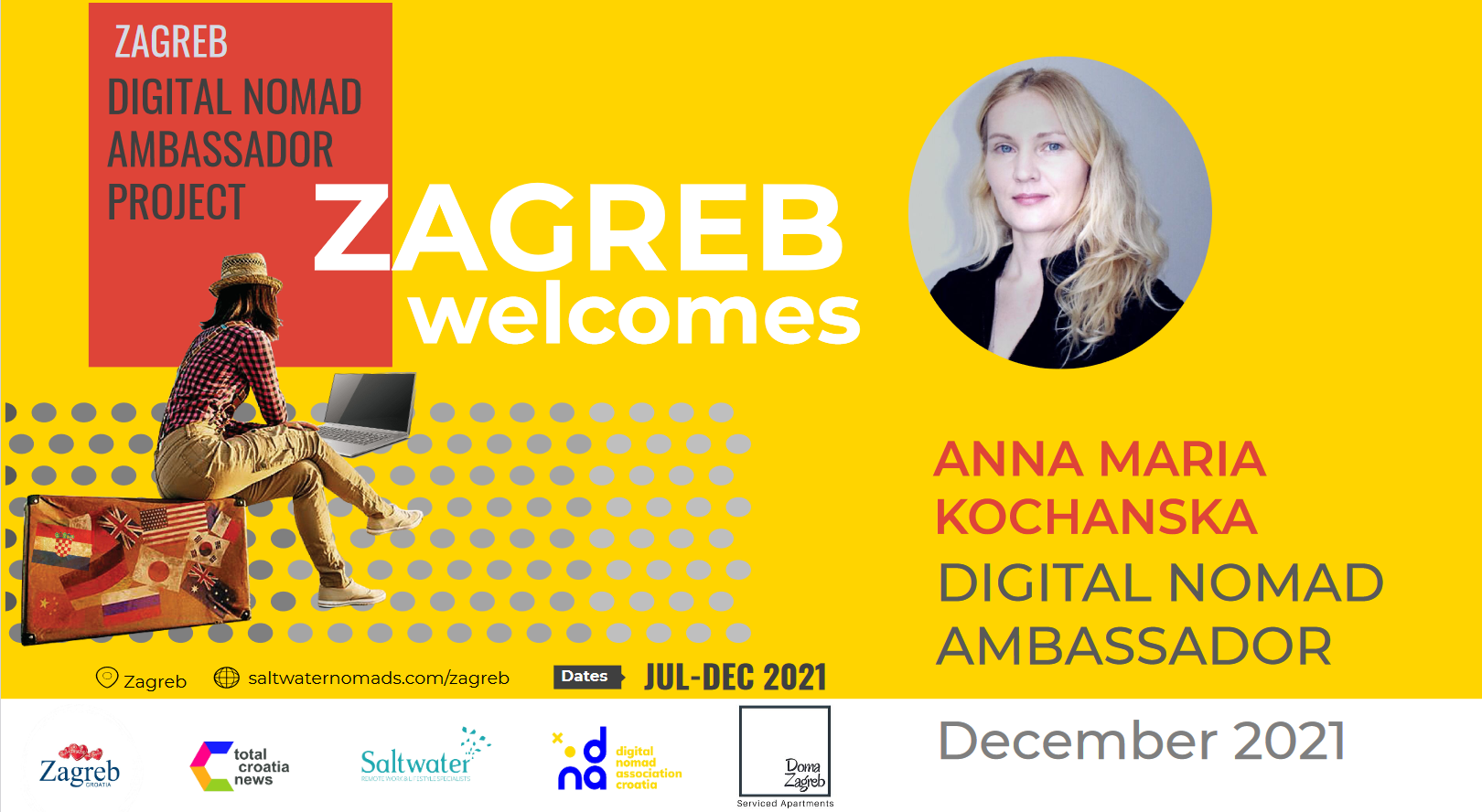
We will have a lot more from Anna Maria soon, but here is her application vdeo below.
Anna Maria is arriving this afternoon and will be put straight to work at Rax's final event and Nomad Panel and after party at BIZkoshnica.
Actually, Anna Maria is not quite the final ambassador of the project. The project organisers - Saltwater Nomads, TCN, Doma Zagreb and Zagreb Tourist Board also wanted to recognise the efforts of a young American whose blood has been infected with a love of Zagreb, and whose pro bono promotional efforts of Zagreb and Croatia in general have been among the most effective of any this year.

Having spent 6 days with Steve Tsentserensky in the car in eastern Croatia recently, his passion for Zagreb is unbridled, and we are delighted to welcome him to the project as the Zagreb Special Guest Digital Nomad Ambassador 2021. Below is the first video of Steve's I ever saw: Subject Zagreb.
Rax has put together a very strong panel for tonight's event:
The event panel brings together a diverse group of digital nomads to share more about their remote work journey, from travel to business and lifestyle. Discussion will include tips and insights to take your lifestyle remote, as well as real world challenges that can arise in a nomadic life.
Panel:
Steve Tsentserensky - United States | Writer, Videomaker
Alyssa Houseknecht - United States | Branding and Design
Nate Cronk - United States | Sales Copywriter
Anna Maria Kochanska - Poland | Business Development, Cross Cultural Consultant
See you there!
For more news and features about digital nomads in Croatia, follow the dedicated TCN section.
Croatian 2021 Tourist Results Almost Nullify Coronavirus-Induced Drop of 2020
November the 30th, 2021 - The pace of economic recovery seems more difficult to assess than the decline that followed the unprecedented situation that dominated 2020. Croatian 2021 tourist results, however, have well and truly outdone themselves.
As Poslovni Dnevnik/Jadranka Dozan writes, what can be taken from what has been released by the Central Bureau of Statistics (CBS) on the first estimate of GDP for the third quarter of 2021 and the real growth rate of 15.8 percent compared to the same quarter last year (according to seasonally adjusted data), is that most analysts can admit that it exceeded their expectations. The Croatian 2021 tourist results were excellent, and with this being the country's strongest economic branch, it certainly poured some much needed cash back into the country's wallet.
Apart from personal consumption, which was mostly in the double-digits, and although the published data of 16 percent also largely exceeded forecasts, some economists will point out that they were pleasantly surprised by the positive contribution of net foreign demand, primarily due to significantly lower growth in the import of goods and services in relation to exports. In the summer months, this is primarily ''stamped'' by tourism.
The growth rate of total Croatian exports reached almost 49 percent, while imports of goods and services increased by just 14 percent when compared to the third quarter of last year. Prime Minister Andrej Plenkovic didn't miss the opportunity to boast about the fact that this is the second highest annual rate of quarterly GDP growth so far (behind the one recorded in the second quarter, of almost 17 percent).
At a press conference, he pointed out that in the first nine months of 2021, Croatia had annual growth of 10.7 percent, which is the highest rate, in his words, since independence. With the message that “the Government will do everything to make the growth at the end of the year reach at least nine percent, he noted that among the EU member states for which data for the third quarter has been made available, Croatia's 15.8 percent is by far the highest GDP growth.
Admittedly, at this time last year, Croatia also took the lead in the CBS estimates of quarterly GDP, but at a rate of decline. At that time, Croatia was the only country with a double-digit decline in the EU, but it turned out a little later that it was slightly larger down in Greece.
At the level of the whole of 2021, it is almost certain that the Croatian economy will record the highest growth rate to date. Bearing in mind that epidemiological measures were tightened due to the coronavirus crisis at the end of November last year, which ultimately contributed to an annual decline of 7.4 percent in the last quarter, solid growth is also expected for the last quarter of this year. In any case, all indications are that year-round growth could be very close to the double-digit rate. However, even 9 percent growth would mean catching back up with the GDP levels of the pre-crisis 2019 this year, although it was calculated at the beginning of this year that after last year's sharp decline, we'd have to wait until at least the end of next year.
Although it is now quite certain that Croatia will be in the group of several countries with the highest GDP growth in the EU this year, less impressive is the fact that in 2019 Croatia only managed to exceed the level of GDP from 2008. According to the latest estimate from Government statisticians, growth in the third quarter of 2021 was recorded by all major components of domestic GDP, with the exception of Government spending, which fell by 4.5 percent compared to the third quarter of last year.
The largest contribution to growth came from a 16 percent increase in personal consumption as the largest component, and from the exports of goods and services (with significantly slower growth for imports). With as much as 71.6 percent higher exports of services compared to the three summer months of last year, the exports of goods increased by 13 percent, while the imports of goods increased by 12.4 percent and services increased by 22.3 percent.
Positive rates also continued with gross fixed capital formation, although growth (7.4 percent) was slower than in the previous quarter (18 percent). Observed according to the production method, quarterly gross value added (GVA) recorded an annual increase of 13.5 percent. As expected, the largest contribution was made in the group of activities related to tourism, and Croatian 2021 tourist results have been truly remarkable, primarily due to a lasting favourable epidemiological situation. This allowed Croatia to excel in comparison to its Mediterranean competition.
In the category that unites wholesale and retail trade, transport and storage, as well as accommodation and food preparation and serving activities, GVA increased by almost 40 percent. Positive rates were also achieved in the remaining ten categories, with double-digits also recorded in the following activities: Information and communication (11 percent) and Professional, scientific, technical, administrative and support service activities (16 percent).
For more, check out our business section.
Survey Looks into Plans of Croatian Tourists for Winter Travel
November the 30th, 2021 - Croatian tourists have been planning winter trips despite the fourth wave of the coronavirus pandemic, but there could still be issues waiting to throw proverbial spanners in the works, including the recently discovered new variant, Omicron.
As Poslovni Dnevnik/Marija Crnjak writes, although Croatian tourists had made fewer trips by September this year than they did last year, their plans for winter travel, including abroad, have apparently increased. At least that's what Croatian tourists thought in September, before the onset of the fourth wave of the pandemic. This was revealed via the MasterIndex survey on the usage habits of financial services in Croatia, conducted by the Improve market research agency, on a sample of 1,046 users of banking services in Croatia aged 18 to 55.
Back in September, 43 percent of respondents planned to travel abroad this winter, while in September 2020, 21 percent planned to travel abroad. 17 percent of them planned to go skiing, 51 percent had an Advent trip planned, while as many as 24 percent of respondents intended to head off abroad celebrate the New Year. Those who said they weren't planning a trip abroad cited financial worries or fears of cancellation as their main issues. The most attractive locations for travelling within Croatia were Zagreb and its surroundings.
When it comes to realised trips, in 2021 2.7 trips per passenger were realised by Croatian tourists, and a year earlier, 3.4 trips were for leisure, while the number of business trips until September remained the same as last year (1.6 trips per respondent). For comparison, back in pre-pandemic 2019, respondents travelled an average of 4.2 times for leisure and 2.6 times a year on business. On average, a little less than 8,000 kuna was spent on one trip for leisure, and as many as 92 percent of respondents find out information about the destination of their trips via the Internet.
Most Croatian tourists pay for their trips with debit cards and cash, and as for the amount they spend on travel, it is higher than it was in the year before.
Of those Croatian tourists who planned to travel abroad at the time of the survey back in September, half planned to travel to a European destination during Advent, and on average they planned to stay on such trips for 3 to 4 days. A quarter of the respondents planned to celebrate the New Year in one of the larger European cities, and they thought that such a trip would last on average 5 days. As for skiing, such a trip was planned by 17 percent of respondents.
Among the respondents who planned a trip, most are those with a higher level of education and who have a higher income, they were also mainly respondents from Istria. Thus, 28 percent of Istrians were sure that they'd travel somewhere abroad this winter, compared to only 3 percent of respondents from Northern Croatia. At the same time, 68 percent of Slavonians planned an Advent trip to a European destination, as opposed to 47 percent of those from Istria and Zagreb. Comparing the data with last year, it could be seen that the number of those planning an Advent trip abroad or to go skiing has increased significantly, but it would be interesting to see what these same respondents plan today, in the midst of the fourth wave of the pandemic and with the emergence of a new strain of the novel coronavirus.
While before the pandemic, each respondent travelled to one of the European destinations on average once a year, now that average has dropped to 0.3 trips. The number of trips within Croatia also decreased slightly, in contrast to 2.6 trips made back in 2019, in 2021, respondents travelled an average of 2.1 times a year.
As for spending on leisure travel, although people are travelling less, respondents are spending more. Thus, on average, Croatian tourists spent a little less than 8,000 kuna on one trip, and last year they spent an average of a little more than 6,100 kuna. Back in pre-pandemic 2019, the average travel spending was 5,150 kuna in total. Respondents from Zagreb and Northern Croatia also spend much more on this type of travel than respondents from the likes of Lika and Istria.
For more, check out our dedicated travel section.
Opuzen School Kids Remove Plastic from Neretva River Mouth
November the 30th, 2021 - A group of Opuzen school kids spent the recent World Childrens' Day cleaning up plastic waste from the Neretva river mouth as a way to protect an honour their environment.
It's not exactly news that the European Union (EU) as a bloc has been trying to crack down harder on plastic waste, with many companies banning plastic straws, cups and even bags unless they're able to be used time and time again. A group of Opuzen school kids are aware of just how damaging plastic waste is to the environment, taking an incredibly long time to break down, and have sought to protect their local river, the famous Neretva, from harm.
As Morski writes, on the occasion of the World Children's Day, an action of cleaning the Neretva river mouth of plastic waste was organised. More specifically, the action in which Opuzen school kids became young environmentalists took place in the Special Ornithological-Ichthyological Reserve.
The world is already so polluted with plastic that each of us eats at least five grams of plastic a week in our food which corresponds to the size of one whole bank card. The horror is all the greater if we know that we get all the plastic into the body through eating a very basic, regular diet.
This was the guiding thought of last week's action of cleaning up the Neretva river mouth, in which, in addition to the Regional Agency DUNEA, the Public Institution for the Management of Protected Areas of Dubrovnik-Neretva County and the Biom Association, local children from Opuzen which is situated along the river participated.
At the beginning of the action, a short educational presentation was held about the reserve located within the Neretva Valley and about the pollution of the sea with plastic and other harmful waste. After that, the participants put on their gloves and went into action. The praiseworthy efforts of these Opuzen school kids working to keep the Neretva river mouth safe and clean will more than likely be repeated soon.
For more, check out our dedicated lifestyle section.
Rags to Riches to Ruin: 200 Years of Hartera, Croatia’s Iconic Paper Factory
Did you know that the first steam engine in the Balkans was installed at a paper factory in Croatia? Or that the same manufacturing plant produced 7% of all cigarette paper in the world? It’s been 200 years since the foundation of the Rijeka Paper Mill, which grew into an industrial giant of international renown only to meet its demise in the early 2000s. A look at the legendary Hartera on November 29th, 2021
Better known by its nickname Hartera, the Rijeka Paper Mill used to be one of the focal points in the city renowned for its (former) industrial glory. Founded by a local industrialist in 1821 and further expanded by foreign investors, the factory grew into a wildly successful business over time. Hartera provided jobs to thousands of workers, its paper products were exported worldwide, and won medal after medal at international expos.
Alas, much like the majority of industry in Rijeka (and the rest of the country), the Paper Mill fell victim to the economic turmoil that followed after the war in the 90s. The factory ceased operating and the insolvency proceedings drew to a close in 2005.
This year marks the 200th anniversary of Hartera’s foundation, and the City Museum of Rijeka marked the occasion with an exhibition dedicated to the Paper Mill, its history and its workers. Named Hartera bez harte (paper mill without paper), the exhibition inspired this article as an homage to the legendary factory and its illustrious past.
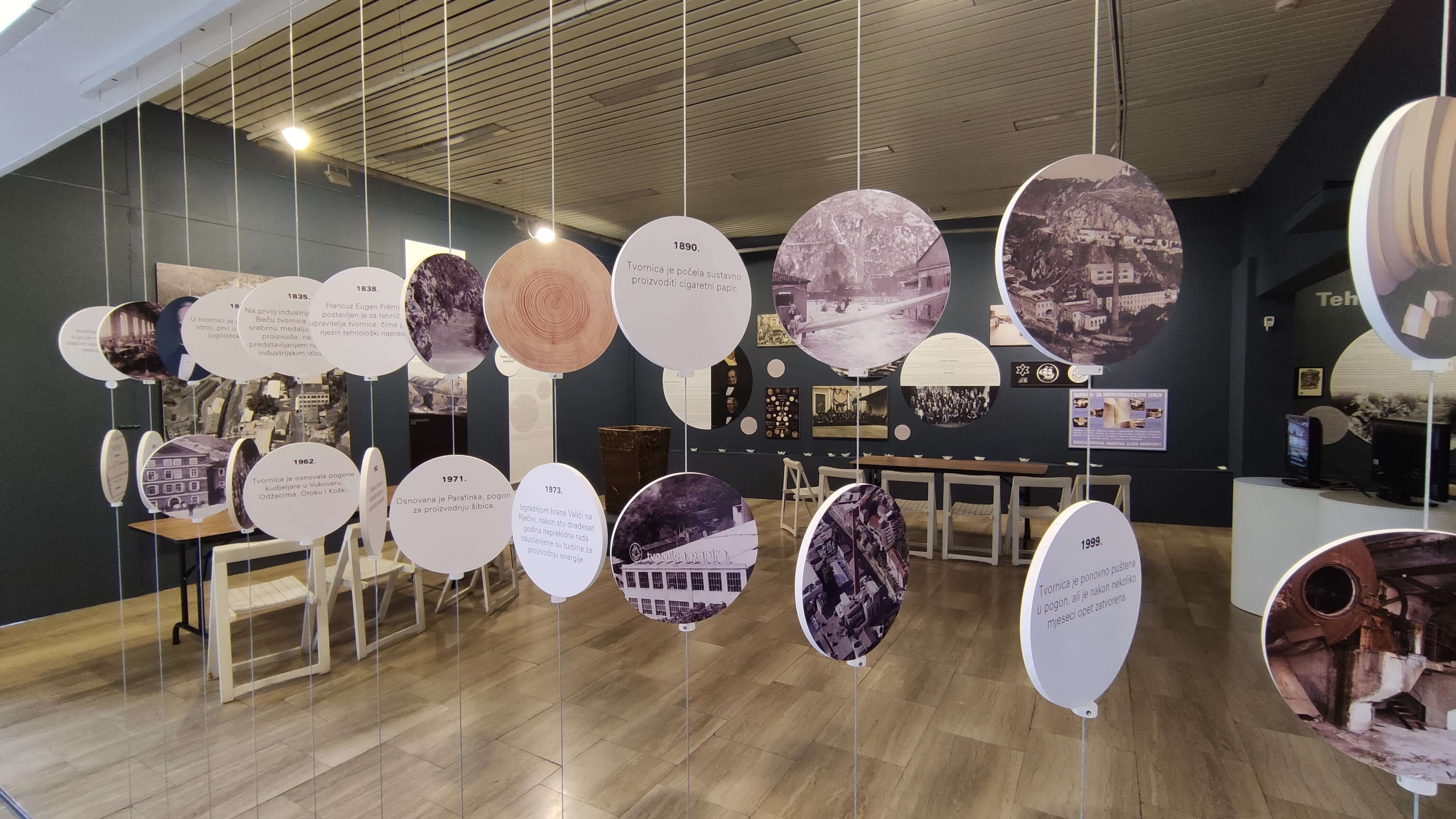
Exhibition Hartera bez harte at the City Museum of Rijeka
The story of Hartera begins with rags.
Humble rags once used to be highly coveted goods: paper was predominantly manufactured from cloth fibers until 1886 when cellulose replaced fabric as the main substance used in paper production.
Rag trade thus became quite a prolific commercial activity in these parts. Peddlers called cunjari visited small villages and went from door to door, collecting used linen and hemp cloth which they later resold to bigger buyers. Rags were in demand worldwide, and so tonnes of old cloth sourced in all parts of Croatia got exported to Trieste, London, Liverpool and New York via the harbour in Rijeka.
Andrija Ljudevit Adamich, a trader, industrialist and one of Rijeka’s best known historical figures saw an opportunity in the booming rag trade. He purchased a mill on the river Rječina in 1821, repurposing the existing facilities into a paper mill which soon employed 21 workers.
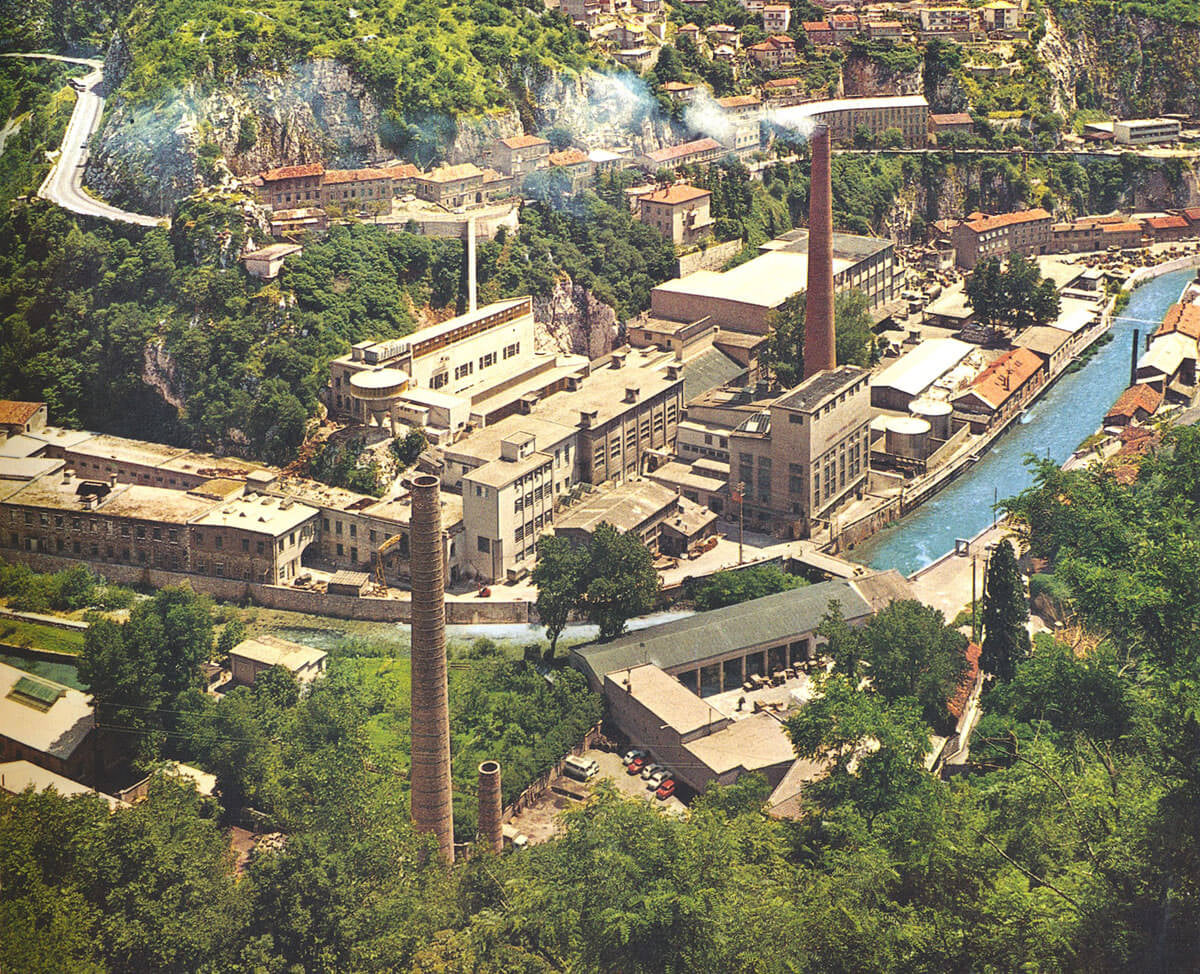
The Rijeka Paper Mill in the 20th century / Nova riječka enciklopedija - Fluminensia
The business turned out to be more of a headache than a success for Adamich. It was a time of general economic hardship, and manufacturing was made more difficult due to high production costs and procurement issues. A few years later the company was sold to foreign investors, namely Charles Meynier and Walter Crafton Smith who turned the struggling business into one of Rijeka’s industrial giants. They expanded and modernised the manufacturing plant and promptly installed a Foudrinier, the best paper making machine available at the time. Oh, and…
The first steam engine in the Balkans
Business picked up quickly after Meynier and Smith took over, and it wasn’t long until the factory employed 250 people to meet the production demand. As the output increased, manufacturing required more power, leading the owners to obtain a steam engine for the factory in 1833 - the first one in the Balkans.
It didn’t take long for Hartera paper to start amassing accolades at major industrial expos. It won a silver medal at the First industrial exhibition in Vienna in 1835, followed by awards won in Paris, Munich, London, Barcelona and Melbourne.
Interestingly enough, the company only launched its products domestically in 1878. For the first 50 or so years of operation, paper products made in Hartera were only sold on foreign markets: Italy, England, USA, Brasil, East India, and the eastern Mediterranean from Greece and Turkey to Jordan and Egypt.
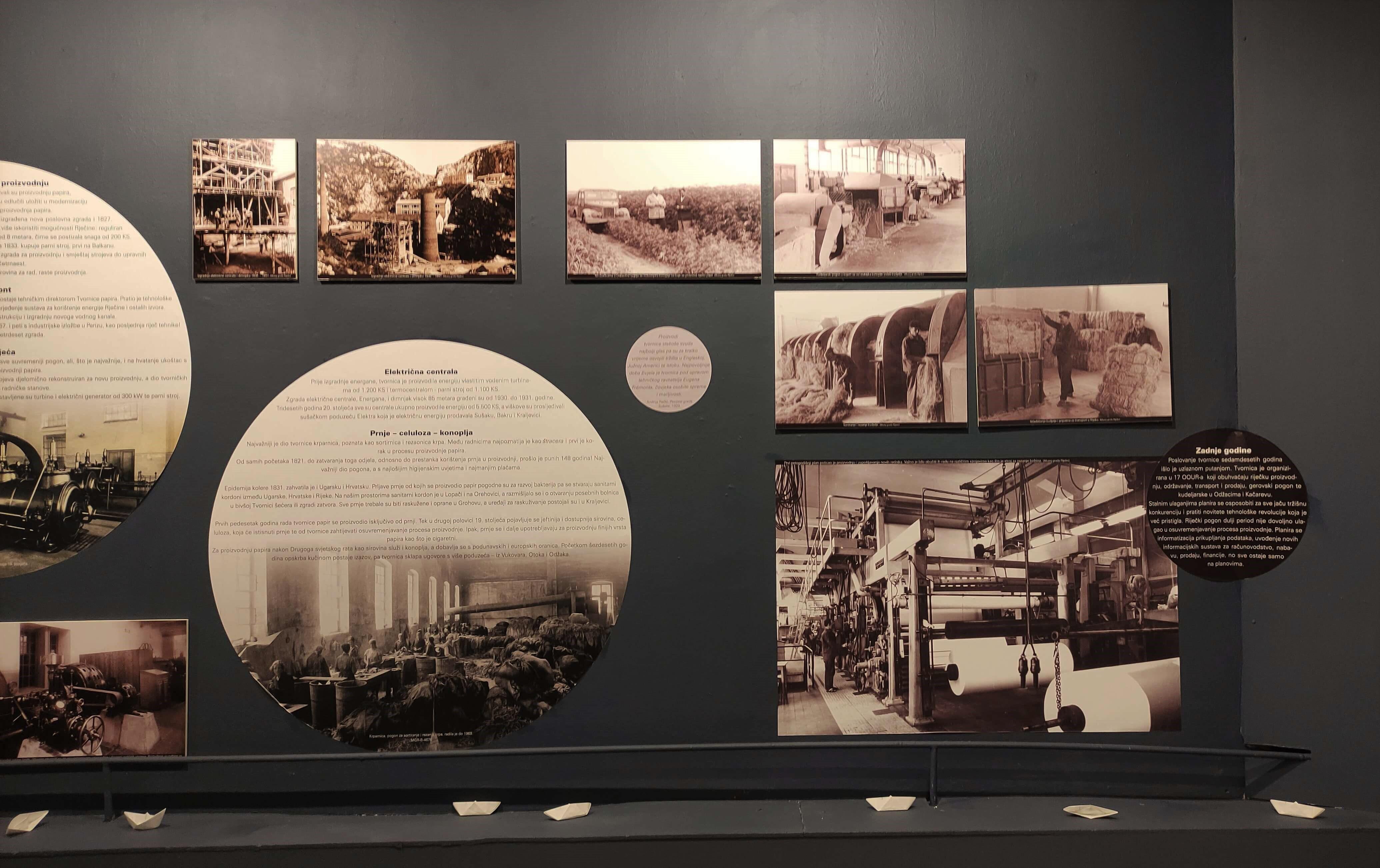
Poor working conditions
While the factory might have had the best manufacturing equipment money could buy at the time, and operated with such success that its workforce expanded significantly with each passing year, working conditions were far from ideal.
At the end of the 19th century, the company employed some 600 people; the factory operated around the clock, with everyone working 12 hour shifts with a single one hour break. No workwear or protective gear was provided to employees, leading to frequent injuries on the floor.
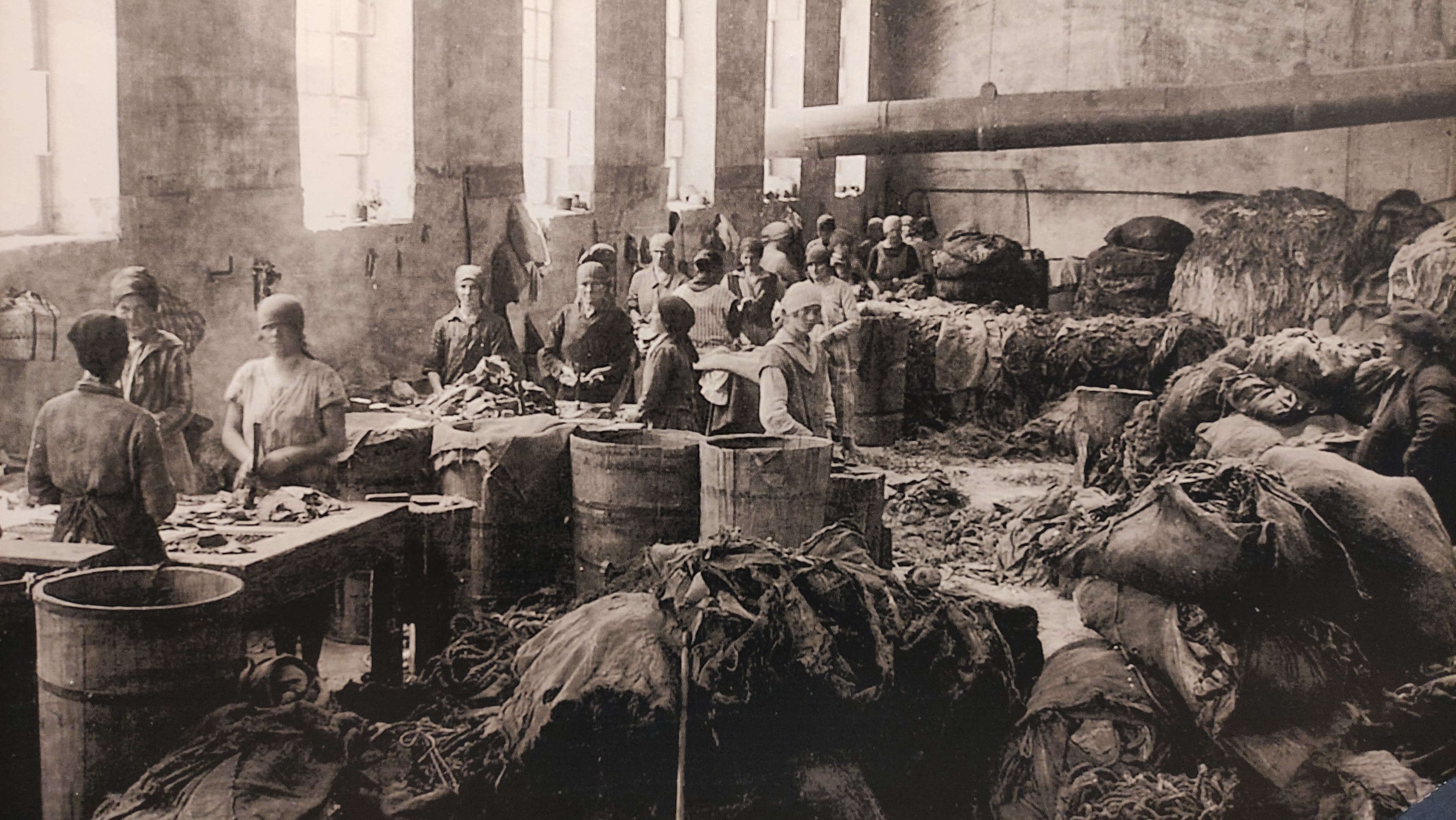
Workers at the rag sorting hall
Hygiene standards weren’t a thing either, the rag sorting facility being the worst offender in this regard. The workers had to sort through mounds of dirty used fabric riddled with bacteria (again, without any protective gear), leading to a slew of infectious diseases.
Considering that some diseases were not yet studied or had no known cure at the time, they were often referred to by alternate names. Anthrax was widely known as the woolsorter’s disease, or in Hartera’s case, cunjavica - the ragpicking disease. In the late 1880s, a particularly severe outbreak of anthrax resulted in the tragic death of 22 women workers.
On labour rights
Fed up with the poor working conditions, workers from several factories in Rijeka got together in 1906 and staged a mass strike. All 600 of Hartera’s workers joined the strike with a few demands: they called for shorter shifts, a day off on Sundays, and a 20% raise. Additionally, they asked for an employee board to be established, composed of eight workers who would serve as intermediaries between the company owners and the rest of the workforce.
The management responded by firing them all.
Things started to look up in the following few decades, though. Several syndicates negotiated with the management, leading to a collective agreement in 1938 which saw quite a few improvements to the working conditions at the paper mill. Employees were to work eight hour shifts, six days a week, and get paid every Saturday. Men earned 5 dinars per hour, whereas women got 4,5. After two years of employment, all workers earned a right to six vacation days a year. The company was also finally required to provide protective workwear and washing facilities with cold and hot water.
Why ‘Hartera’?
The Rijeka Paper Mill was officially named Tvornica papira (paper factory), but the enterprise has more often been referred to as Hartera to this day. Where does the nickname come from?
The Croatian word for paper is papir, but is called harta in the local dialect - which soon resulted in hartera, a logical name for a place where harta was made.
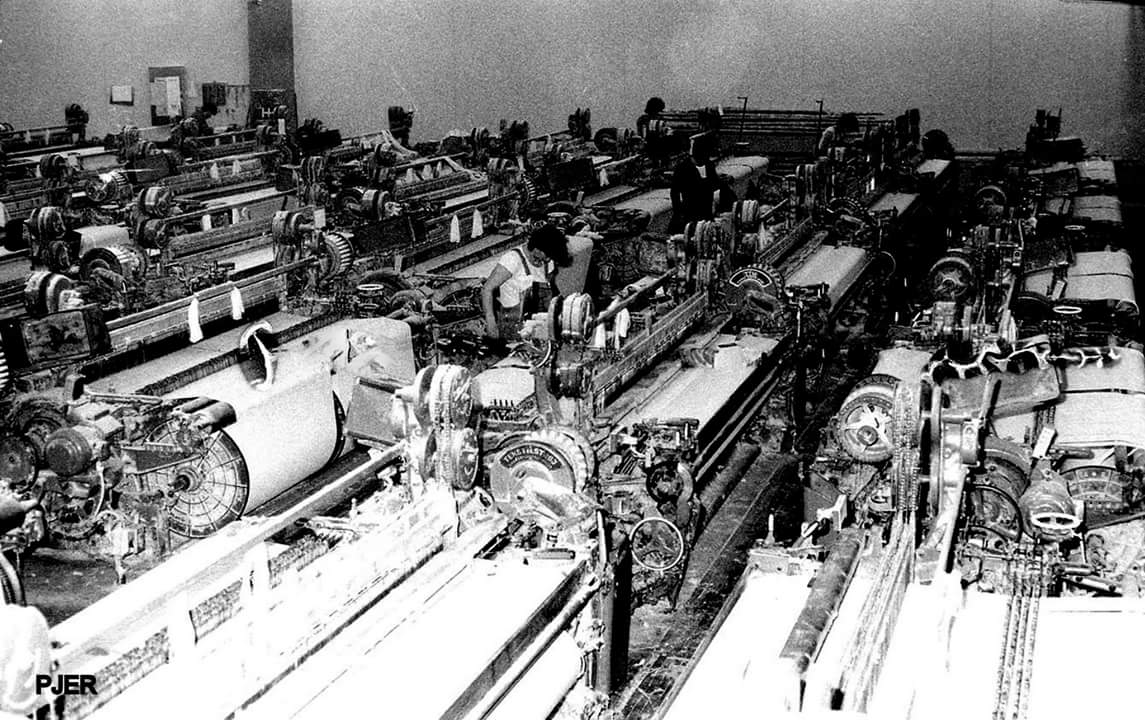
Pero Lovrović Pjer / Nova riječka enciklopedija - Fluminensia
Paper production
A wide range of products was manufactured in Hartera ever since the factory first started operating, mostly various types of writing and packaging paper.
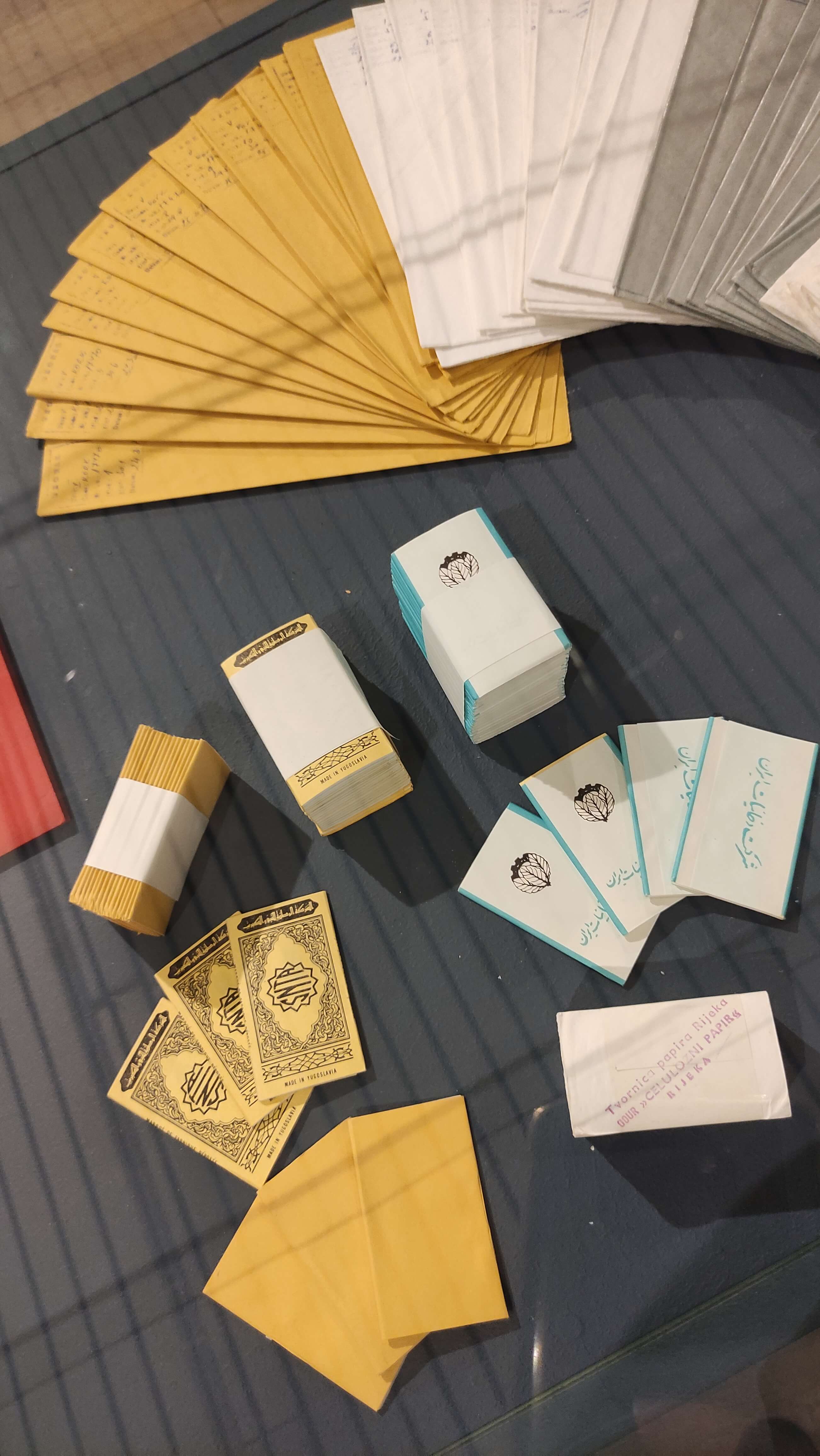
Cigarette paper was first made at the factory towards the end of the 19th century, and over time became one of the company’s most popular products. Quality was of utmost importance, and the factory even procured a tobacco blend called harman to test the rolling paper on the particular blend it was made for.
In the 1980s, Hartera accounted for 7% of global cigarette paper production.
4 billion matches a year
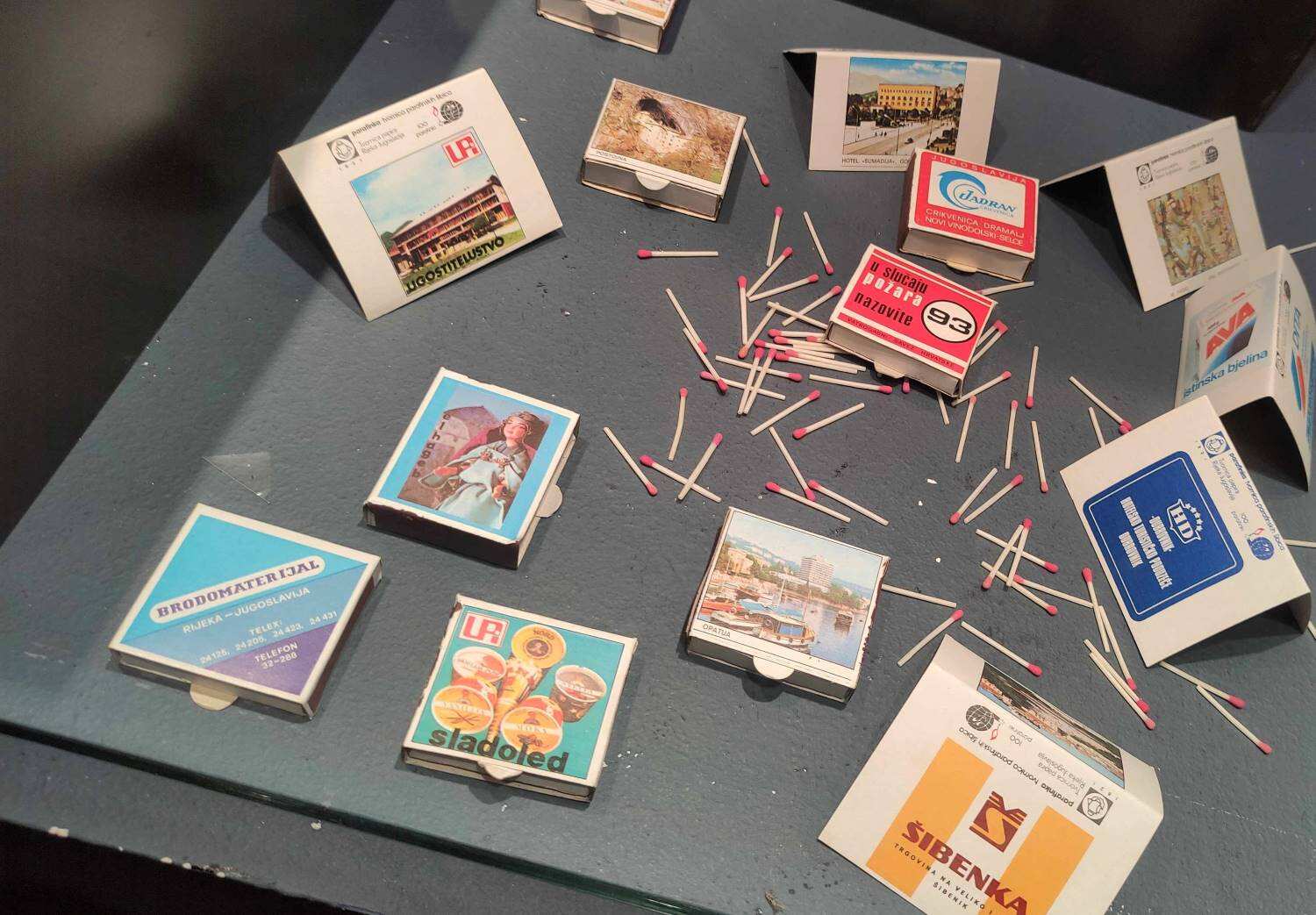
In 1971, one part of the Hartera plant was repurposed into a match factory named Parafinka. It was the only paraffin match factory in former Yugoslavia and became immensely successful within a decade: a report from 1981 shows that Parafinka produced around 48 million matchboxes that year, each box containing 80 matches. That’s close to 4 billion matches! If the figure is hard to grasp, let’s put it this way: if you were to arrange all those matches in a single line, it would circle the Earth three times.
Matches were made of Hartera’s thin, tightly rolled paper and then dipped in paraffin, resulting in a product which was thinner and shorter than wooden matches. The packaging was quite attractive, with colourful prints announcing major events and manifestations, advertising businesses, or promoting the region’s natural beauty and cultural heritage.
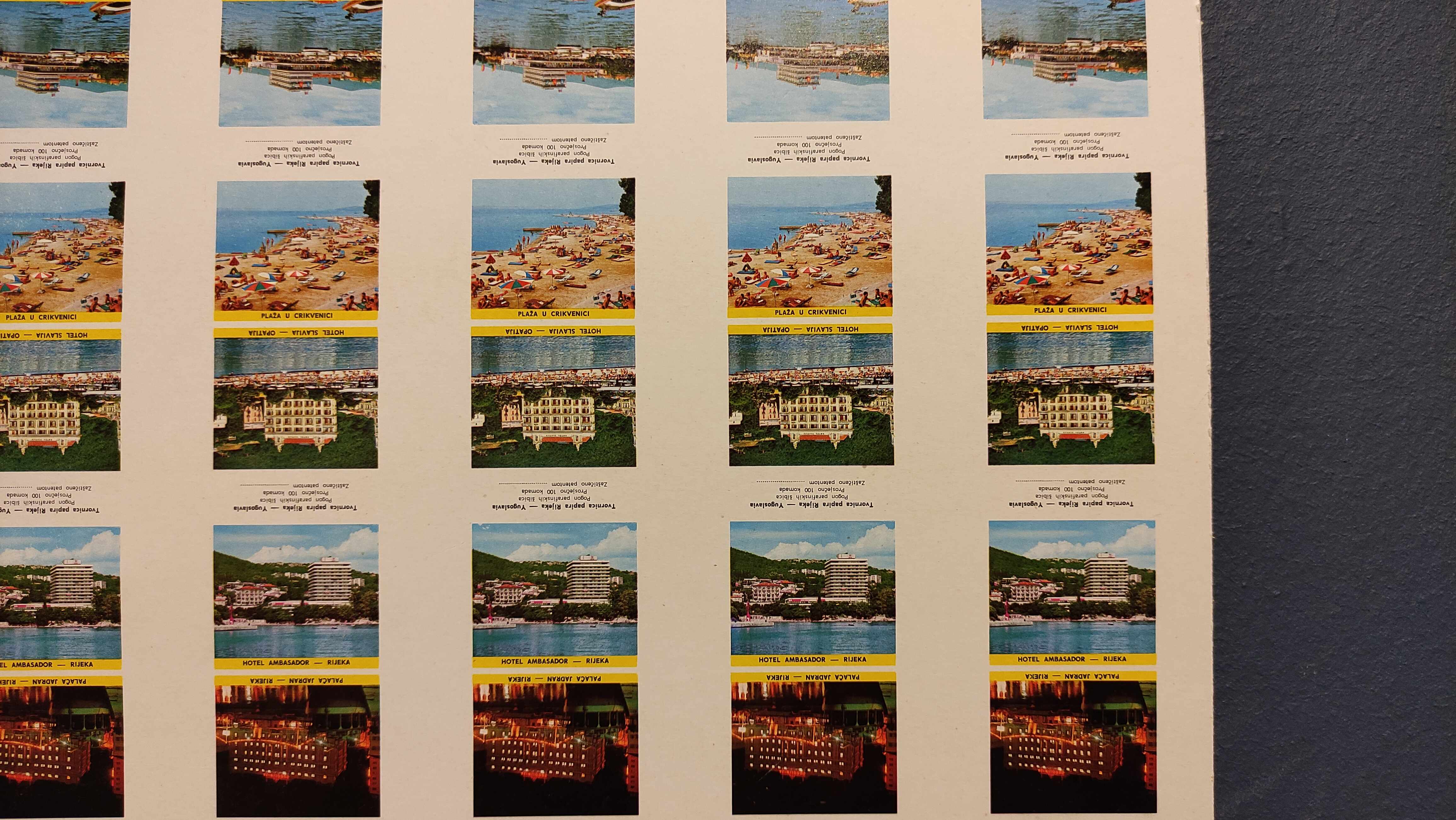
Parafinka matches were exported worldwide, including Libya, Egypt, USSR, Hong Kong, Austria, Switzerland, Belgium and the Netherlands.
Crises, disasters and the final blow
In almost two centuries of operation, the paper mill faced economic crises, wars, and a few natural disasters. The river Rječina was the main source of power for the factory, but also a destructive force. One severe flood damaged the plant in 1852, and the entire mill had to close down for several months after another disastrous flood in 1898. Flooding wasn’t the only threat: various parts of the plant burned down on four occasions at the turn of the 20th century.
Hartera survived all the hardships and - save for a few hiccups - continued to thrive until the war. In 1991, the company was at the height of its power: it employed over a thousand people and was the second biggest paper manufacturer in Europe.
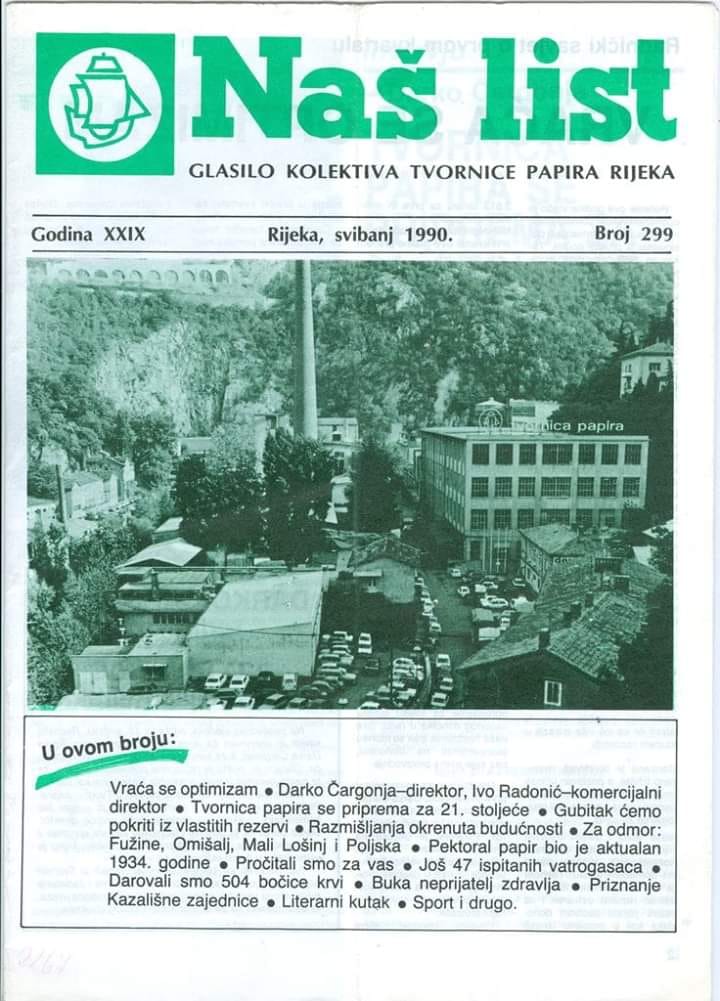
Rijeka Paper Mill bulletin from 1990 / Nova riječka enciklopedija - Fluminensia
Unfortunately, the war times and the economic turmoil that followed turned out to be the only hardship Hartera couldn’t survive. Substantial losses led to the factory closing down and the company declaring insolvency in 2005.
Uncertain future
After the paper mill ceased operating, the factory turned into a unique venue for a music festival. Named after the location, the Hartera Music Festival took place in the derelict factory halls until 2016, when the ruinous objects were declared unsafe and the festival moved to another location.
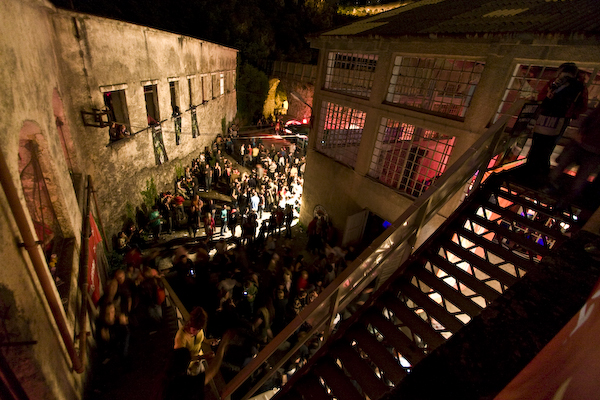
Hartera Music Festival in 2008. Source: Tim Ertl / Flickr
The Hartera festival was part of an initiative aiming to revitalize the area and preserve an important part of Rijeka’s industrial heritage. The City initially expressed interest, but the plans fell through due to lack of funding and a bureaucratic wall; the same happened a few years later after another initiative was devised to transform the Hartera complex into a socio-cultural centre which was supposed to breathe life - and business - into the largely abandoned area.
It remains to be seen if anything will come of the plans to revive the rundown factory. The outlook isn't hopeful, but one thing is certain: the Hartera paper factory and its workers are an integral piece of Rijeka's history and will always remain a part of the collective memory of its citizens.
The content of this article is largely based on the information displayed at the exhibition Hartera bez harte at the City Museum of Rijeka (author of the exhibition: Kristina Pandža). Unless noted otherwise, photos were taken by the author of the article.
ZSE Main Indices Decrease
ZAGREB, 29 Nov 2021 - The main Zagreb Stock Exchange indices decreased on Monday, the Crobex by 0.23% to 1,980 points and the Crobex10 by 0.16% to 1,213 points.
Regular turnover was a little over HRK 7 million and only one stock crossed the million kuna mark, the HT telecom, turning over HRK 1.59 million. It closed at a stable HRK 184 per share.
Thirty-six stocks traded today, with 12 gainings and 15 losing in price, while nine were stable.
(€1 = HRK 7.519746)
For more, check out our dedicated business section.
Man Who Took Al Jazeera Reporter's Microphone During Live Broadcast Arrested
ZAGREB, 29 Nov 2021 - Zagreb police have arrested a man who took an Al Jazeera reporter's microphone as she was reporting live from a recent protest against COVID certificates in Zagreb, and they filed a criminal report against him for using force against a person doing public interest work
Zagreb police officers have completed a criminal investigation into a 33-year-old man suspected of using force against a person doing public interest work or working in public service, the Zagreb Police Administration said on Monday.
Police have established the identity of the man who on 20 November, about 6 p.m., took the microphone from Al Jazeera Balkans reporter Nikolina Zavišić during a live broadcast from the protest against COVID certificates in the main city square.
Police today arrested the man and filed a criminal report against him with the competent state attorney's office.
For more news about Croatia, click here.
Banožić: Defence Ministry Won't Cover for Incompetence of President's Office
ZAGREB, 29 Nov 2021 - Defence Minister Mario Banožić on Monday responded to accusations from the president's office that soldiers were not receiving per diems, telling the head of the president's office and the president's defence advisor that the ministry "will not cover for their incompetence".
"Instead of holding unconvincing press conferences and shifting responsibility to others, the gentlemen from the Office of the President should be more responsible in spending their office's budget, so there would be no problems they had mentioned. While I am minister, the Ministry of Defence will not cover for their incompetence," Banožić wrote on Facebook.
The head of the president's office, Orsat Miljenić, and presidential defence adviser Dragan Lozančić said today that Banožić's abuse had spread to soldiers who supported the president because they had not received their per diems.
Miljenić said Banožić decided a month ago not to pay per diems to soldiers who supported President Zoran Milanović in any way, specifically soldiers who recently were lined up in Vukovar and carried wreaths in Škabrnja.
Miljenić said the military chief-of-staff warned the president's office about dozens of such cases in the past month. He added that Prime Minister Andrej Plenković was notified but has taken no action.
Miljenić said this situation was unacceptable and hoped that Banožić would rescind his "unconstitutional and unlawful decision" and resume paying people what they had earned.
For more on politics, follow TCN's dedicated page.
President's Office: Defence Minister's Abuse Has Spread to Soldiers
ZAGREB, 29 Nov 2021 - The head of the president's office, Orsat Miljenić, and presidential adviser Dragan Lozančić said on Monday that Defence Minister Mario Banožić's abuse had spread to soldiers who supported the president because they had not received their per diems.
Speaking to the press in the president's office, Miljenić said soldiers were doing their job honorably and that Banožić's abuse had spread to them following the "unlawful and sudden" retiring of Colonel Elvis Burčul and the harassment of the Chief of the General Staff, Admiral Robert Hranj.
Miljenić said Banožić decided a month ago not to pay per diems to soldiers who supported President Zoran Milanović in any way, specifically soldiers who recently were lined up in Vukovar and carried wreaths in Škabrnja.
Miljenić said the president's office had to react because Hranj warned them about dozens of such cases in the past month. He added that Prime Minister Andrej Plenković was notified but has taken no action.
Miljenić said this situation was unacceptable and hoped that Banožić would rescind his "unconstitutional and unlawful decision" and resume paying people what they had earned.
The president's defence and national security adviser Lozančić said the people in question were active soldiers who were executing their tasks in line with annual plans.
He said that in a letter to the defence minister, Chief-Of-Staff Hranj told Banožić that he saw his decision in part as a continuation of his conduct so far, which Hranj said had all the elements of a strategic abuse of him as a person and a soldier which began when Banožić asked that Hranj resign, and continued in public criticisms and Defence Ministry press releases.
Under the decision in question, Armed Forces personnel are not allowed to support the president's office nor use Defence Ministry money. Also, the costs incurred while extending such support will not be paid.
In his letter, Hranj told Banožić that his decision obstructs and hampers the functioning of the Armed Forces in general, and in particular the Honorary and Protection Battalion, whose fundamental job is to support and protect the president.
Responding to questions from the press, Lozančić said that unless the minister changed his decision, the president had two choices, either not to execute his duty as commander in chief and represent the army at certain events or do so.
Miljenić said all people in possession of a valid command and travel order would get their money, and that he hoped there would be no lawsuits, but added that this was up to the minister.
He said the president was elected to also represent the army at home and abroad, which the minister "neither can nor has the right to restrict."
Miljenić said the president would continue to go where he had to and that under the constitution and the law, the minister was not authorized to withhold per diems for soldiers accompanying the president.
He added that it was Hranj who gave the commands based on which travel orders were issued, and noted that the commander in chief represents the Armed Forces and that they support him in doing so, in which the minister of defence has no say.
For more on politics, follow TCN's dedicated page.


